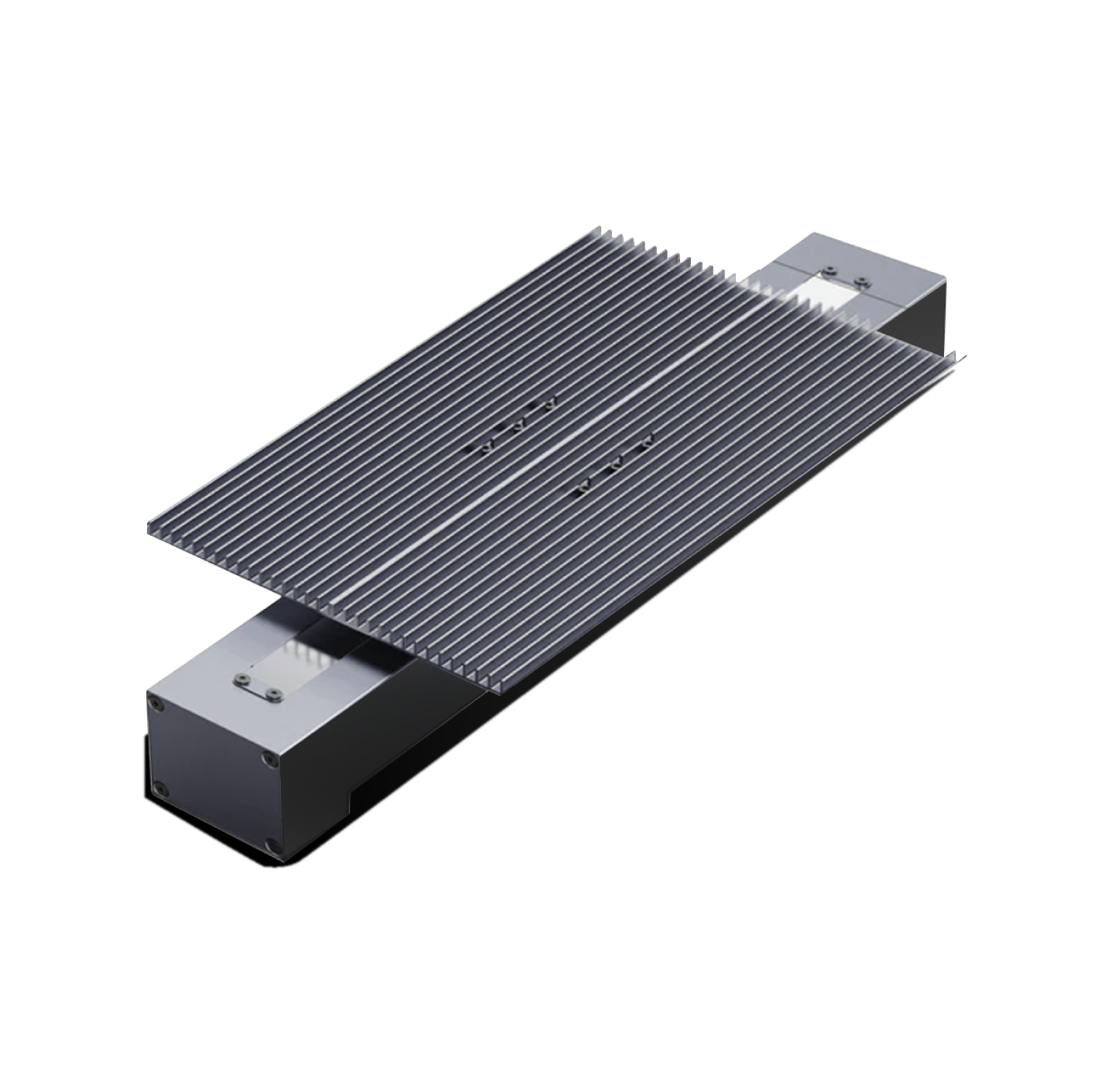Laser cutting technology plays an increasingly important role in modern manufacturing and design, especially in the field of plastic processing. With the development of laser technology, it has become an efficient, precise and flexible cutting method, widely used in many industries such as advertising, art, electronic products and industrial parts. Compared with traditional cutting methods, laser cutting has the characteristics of almost no contact and no physical pressure, and can achieve precise cutting of complex shapes. In this guide, we will explore in detail the basic knowledge required for laser cutting plastics. I hope this article can help you take a successful step in the field of plastic processing and improve your work efficiency and product quality.

1.Types of plastics suitable for laser engraving
-
Cast Acrylic
Application: Excellent optical properties, suitable for laser engraving of billboards, display stands and trophies.
Note: Laser engraving is prone to melting, and the power and speed need to be controlled to prevent the edges from yellowing.
-
Polyethylene (PE)
Application: Suitable for engraving of labels and certain packaging materials.
Note: Laser engraving may produce smoke and odor, and good ventilation must be ensured.
-
Extruded Acrylic
Application: Suitable for engraving of advertisements, artworks and logos.
Note: The engraving depth should be controlled to avoid edge melting or deformation.
-
Polyethylene terephthalate (PET)
Application: Can be used for labels and logos.
Note: Laser engraving is prone to gas generation, and attention should be paid to waste gas treatment.
-
PES film (polyethersulfone film)
Application: Suitable for logos and labels of electronic equipment.
Note: Laser engraving may cause discoloration, and attention should be paid to parameter settings.
-
Polyimide (PI)
Application: Suitable for marking electronic components.
Note: It has strong absorption of laser light, and the power needs to be adjusted to prevent burning.
-
Foam PE (foam polyethylene)
Application: Used for marking packaging and protective layers.
Note: It may melt due to laser heat, so be careful to control the speed when engraving.
-
Polyoxymethylene (POM)
Application: Commonly used for marking mechanical parts.
Note: Smoke will be generated during laser engraving, and ventilation is required.
-
ABS
Application: Widely used for marking and engraving of toys, home appliances, etc.
Note: Melting may occur, and the cutting depth and speed need to be adjusted.
-
Polyphenylene sulfide (PPS)
Application: Used for marking in high temperature and chemical environments.
Note: High parameter control is required during laser engraving to avoid material damage.
-
Polyamide (PA)
Application: Commonly used for marking industrial and consumer products.
Note: Laser engraving may cause color changes, so ensure that the parameters are set appropriately.
-
Polypropylene (PP)
Application: Suitable for label and packaging engraving.
Note: It is highly reflective of lasers, so be careful to set the power when engraving.
-
Polybutylene terephthalate (PBT)
Application: Suitable for the marking of engineering plastics.
Note: Be careful to prevent overheating and deformation during laser engraving.
-
Polystyrene (PS)
Application: Used for engraving of disposable tableware and toys.
Note: It may melt, and the engraving depth needs to be controlled.
-
Polycarbonate (PC)
Application: Commonly used for safety shields and electronic product markings.
Note: Be careful to prevent cracks in the heat-affected zone.
-
Polyurethane (PU, PUR)
Application: Suitable for engraving of insoles and mattresses.
Note: Pay attention to the chemical properties of the material during laser engraving to avoid the release of harmful gases.
2.How to Cut Plastics with a Laser - A Step-by-Step Guide
Laser cutting plastics requires a focused laser beam to cut the material, which is a precise and efficient method. Here is a step-by-step guide on how to cut plastics with a laser:
- Step 1. Prepare your laser cutter:
Make sure your laser cutter has a laser that is suitable for cutting plastic materials. LumiTool F20
- Step 2. Select the right plastic material:
Select a plastic material that is suitable for laser cutting. Common materials are acrylic, polycarbonate, polyethylene, and others mentioned above.
- Step 3. Import your file/pattern:
Create or import the design you want to cut into your shape software. Make sure the file is in the correct format and that the dimensions and cut lines are correct.
- Step 4. Configure the laser cutting parameters:
Adjust the focus of the laser beam according to the thickness of the plastic. Refer to the manufacturer's guide for the specific plastic material you are using. Set the laser cutting parameters, including power, speed, and frequency, according to the material and its thickness. Test the settings on scrap material if needed.
- Step 5. Focus on the laser:
Adjust the laser focus to the correct distance from the surface of the material. This ensures that the laser beam is focused on optimal cutting performance.
- Step 6. Run a Test Cut:
Before cutting the entire design, make a test cut on a small section of the material to verify that the laser settings are correct. Make adjustments as needed.
- Step 7. Start the Laser Cutting Process:
Load the prepared design file into the laser cutting software. Carefully check the placement of the design on the material.
- Step 8. Post-cut Inspection:
Once the cut is complete, inspect the smoothness and quality of the cut edge. Remove the cut piece from the laser cutting bed.
- Step 9. Clean and Maintain the Machine:
Clean the laser cutting machine and its components regularly to ensure optimal performance. Follow the manufacturer's maintenance guidelines.
3.Application of laser cutting plastics
Laser cutting plastics has been widely used in many industries. Here are some of the main application areas:
-
Advertising and logo
Application: Used to make signs, billboards, exhibition displays and personalized logos.
Advantages: Laser cutting can achieve fine patterns and texts, and enhance visual effects.
-
Packaging industry
Application: Used to cut and shape plastic packaging materials such as plastic bags, containers and pallets.
Advantages: Efficient and precise cutting improves production efficiency.
-
Electronic products
Application: Used to cut plastic housings, instrument panels and components.
Advantages: Suitable for cutting complex shapes to ensure the accuracy and fit of parts.
-
Automotive industry
Application: Used to make automotive interiors, housings and functional parts.
Advantages: Provide high-strength and lightweight solutions.
-
Models and toys
Application: Used to make model parts and toy components.
Advantages: Able to achieve complex designs and improve the sophistication of toys.
-
Crafts and artworks
Application: Used to make customized artwork and crafts.
Advantages: It can cut delicate patterns and enhance the uniqueness of artwork.
-
Architecture and interior decoration
Application: It is used to make interior decorations, partitions and display racks.
Advantages: Flexible design and cutting make the interior space more personalized.
-
Household goods
Application: It is used to make home decorations, storage boxes and kitchen utensils.
Advantages: It can achieve personalized design and high-precision cutting to enhance practicality and aesthetics.
Laser cutting plastics is playing an important role in many industries due to its high efficiency and precision, promoting the progress and innovation of production technology.
4.FAQs about laser cutting plastics
- Q1: What are the advantages of laser cutting plastics?
- A1: Laser cutting plastics has the advantages of high precision, flexibility, smooth cutting edges, almost no physical stress and less post-processing requirements.
- Q2: Can all plastics be cut with lasers?
- A2: Not all plastics are suitable for laser cutting. Common cuttable plastics include acrylic, polyethylene, polypropylene and ABS, and some plastics may produce harmful gases when cut.
- Q3: What is the best material thickness for laser cutting?
- A3: The best material thickness for laser cutting depends on the power and type of laser. Generally speaking, low-power lasers are suitable for cutting thin materials (such as 1-6mm), while high-power lasers can cut thicker materials.
- Q4: Does laser cutting have any thermal effect on plastics?
- A4: Heat is generated during laser cutting, which may cause the plastic to melt or deform. Therefore, it is important to control the cutting speed and power to reduce the heat-affected zone.
- Q5: Are harmful gases generated during laser cutting?
- A5: Yes, toxic gases are released when laser cutting certain plastics (such as PVC). Therefore, it is necessary to ensure effective ventilation and gas filtration systems.
- Q6: How to choose plastic materials suitable for laser cutting?
- A6: When choosing plastics suitable for laser cutting, you should consider the type of material, thickness, and the required cutting accuracy and effect. Common materials include acrylic, polyethylene, and ABS.
- Q7: Is post-processing required after laser cutting?
- A7: A small amount of post-processing is usually required after laser cutting, especially when there is melting or burrs on the cutting edge. Sandpaper or other tools can be used for grinding.
5.Conclusion
- Laser cutting plastic technology has shown unparalleled advantages in all walks of life, especially in achieving high precision, complex patterns and efficient production. With the continuous growth of market demand, the use of advanced laser cutting equipment has become an important strategy to enhance competitiveness.
- Our fiber laser engraving machine LumiTool F20 is the ideal solution to meet this demand. With its advanced fiber laser technology, LumiTool F20 can accurately cut a variety of plastic materials, ensure smooth cutting edges, no melting, and greatly reduce the heat affected zone. This not only improves the overall quality of the product, but also provides greater flexibility for creative design.
- Combined with the wide application of laser cutting plastics, LumiTool F20 will help you achieve more efficient production and more competitive products in various fields such as advertising, electronic products, medical devices, etc. with excellent performance and easy operation. Choose LumiTool F20 to take your plastic processing technology to a new level and bring greater success and innovation to your business!











